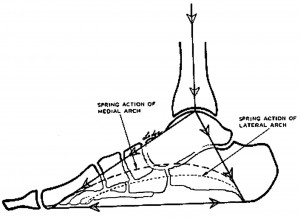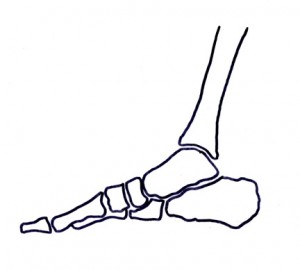 An arch is a structure that crosses a span and allows weight to sit above it. The human foot has three arches within it- an inner arch, an outer arch and a transverse arch that crosses the middle of the foot. These three arches when employed successfully support the weight of the body above them. I’m sure readers of the blog will not be surprised to hear that I think most people fail to use their arches as designed.
An arch is a structure that crosses a span and allows weight to sit above it. The human foot has three arches within it- an inner arch, an outer arch and a transverse arch that crosses the middle of the foot. These three arches when employed successfully support the weight of the body above them. I’m sure readers of the blog will not be surprised to hear that I think most people fail to use their arches as designed.
There are twenty-six bones in each foot with thirty-three different movements available to a fully mobile foot. There are over one hundred muscles, ligaments and tendons in the foot that are responsible for holding the foot together as well as providing elasticity for the moveable arches in the feet.
The arches in the feet are spring arches which means they should rise and fall with each successful placement of the foot. This is literally the spring in our step. In order for the arch to spring as designed it needs to work in concert with the bones of the shin. If the foot hits the floor at a right angle the spring arches of the foot will rise and fall as they should. If the foot lands in front of the shin at an obtuse angle the arches won’t work as designed.
Dysfunctional foot placement is a major factor in injuries in both walking and running. I have written before about the foot strike in running—while I land on my forefoot when I run there is nothing wrong with landing on your heel. What is important is the relationship of the shin and knee to the foot when either the heel, or the front of the foot, strike.
Whether walking or running the ankle and foot need to land underneath the shin and knee if we want to take advantage of the ingenious spring arch of the foot.


